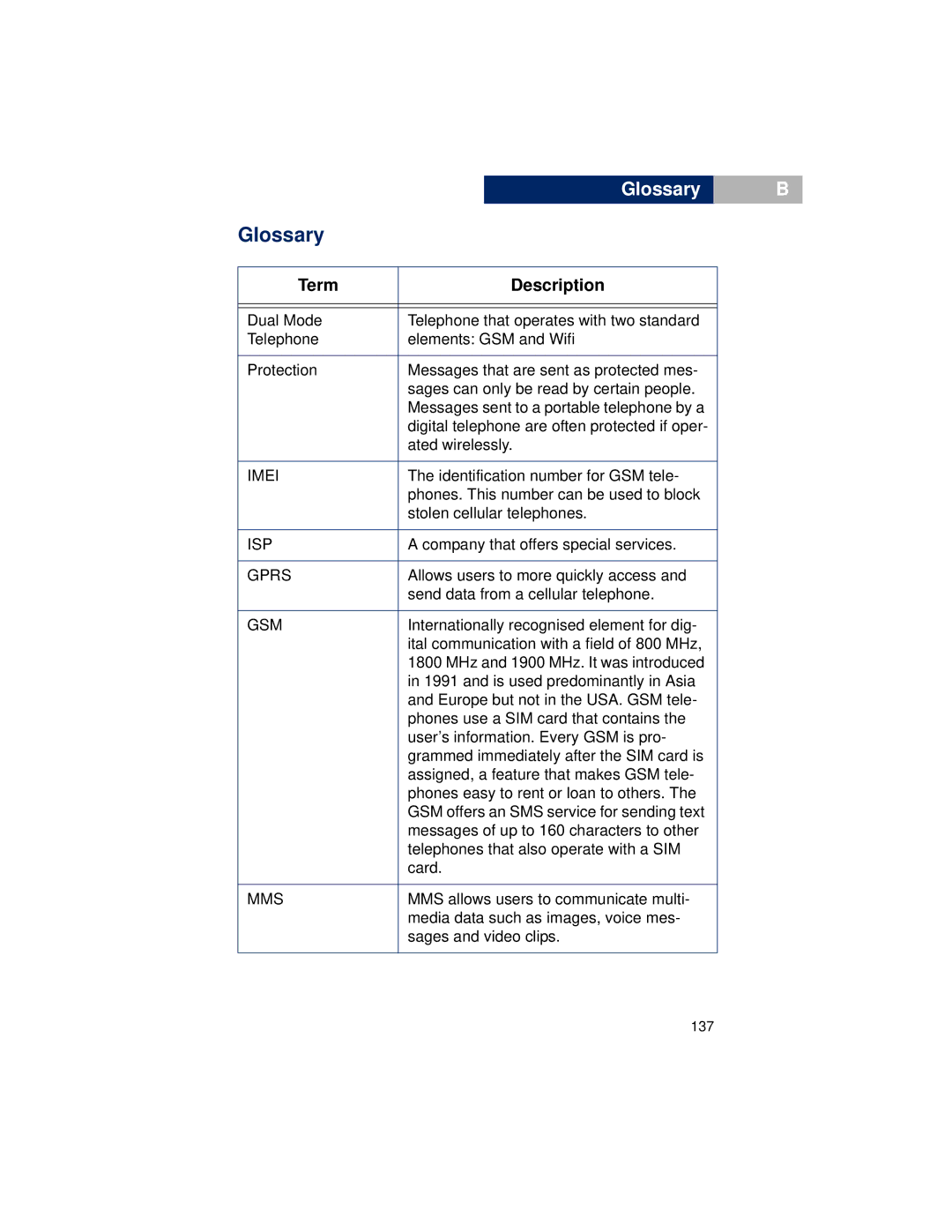Glossary
B
Glossary
Term | Description |
|
|
Dual Mode | Telephone that operates with two standard |
Telephone | elements: GSM and Wifi |
|
|
Protection | Messages that are sent as protected mes- |
| sages can only be read by certain people. |
| Messages sent to a portable telephone by a |
| digital telephone are often protected if oper- |
| ated wirelessly. |
|
|
IMEI | The identification number for GSM tele- |
| phones. This number can be used to block |
| stolen cellular telephones. |
|
|
ISP | A company that offers special services. |
|
|
GPRS | Allows users to more quickly access and |
| send data from a cellular telephone. |
|
|
GSM | Internationally recognised element for dig- |
| ital communication with a field of 800 MHz, |
| 1800 MHz and 1900 MHz. It was introduced |
| in 1991 and is used predominantly in Asia |
| and Europe but not in the USA. GSM tele- |
| phones use a SIM card that contains the |
| user’s information. Every GSM is pro- |
| grammed immediately after the SIM card is |
| assigned, a feature that makes GSM tele- |
| phones easy to rent or loan to others. The |
| GSM offers an SMS service for sending text |
| messages of up to 160 characters to other |
| telephones that also operate with a SIM |
| card. |
|
|
MMS | MMS allows users to communicate multi- |
| media data such as images, voice mes- |
| sages and video clips. |
|
|
137
